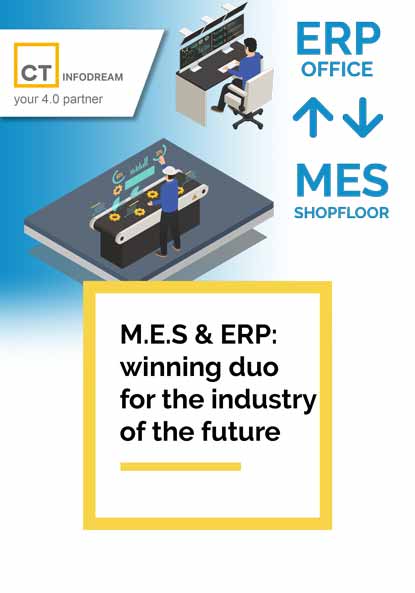
MES and ERP, the winning duo for the industry of the future, are two complementary software packages for achieving industrial excellence.
ERP: the backbone of the company
An ERP (Enterprise Resource Planning) manages all of a company’s operational processes. Thus, it guarantees a real-time view of outstanding amounts and the uniqueness of the information in the company database.
It is the central tool of the supply chain.
This IT solution is now present in industries all over the world.
And with good reason: it offers real added value by providing a global vision and levers for global actions in terms of flows, stocks, orders and production launches. As a result, it enables the company’s management to be planned and optimised.
A complementary association with the MoES
In a global company process, the ERP stops where the operator’s work begins. Indeed, the ERP has no visibility on the actions carried out in the workshop, nor on the progress of the Manufacturing Orders (OF) that it has launched in production.
To describe the work to be carried out, operators and quality inspectors generally have paper documents at their disposal. These are work instructions (IT), follow-up sheets (FS), etc. These are produced using conventional office automation solutions (Word, Excel, PPT, etc.).
The expected traceability therefore remains in paper format, preventing any capitalisation or pooling. But above all, this breaks the digital chain.
The MES (Manufacturing Execution System) software will ensure this digital continuity. How does it do this? By providing operators with digitised operating sequences.
At the request of the software, the operators will provide direct traceability (measurement, serial number, tools used) or indirect traceability (timestamp, electronic signature). As soon as they are entered, all the data are sent back to the ERP in real time.
The information collected enriches the company’s database. It also serves as input for the ERP in its planning of operational processes.
The MES, with its finer level of granularity, will complement the « macro » data managed by the ERP.
The MES, with its finer level of granularity, will complement the « macro » data managed by the ERP.
In order to give a concrete idea of this concept, we can bring the different tools back to their respective time scale:
ERP = Time
MES = The minute
Actuators = the second
Learn more about MES Software :
Definition of the MES software
The 11 functions of an MES
The MES for whom?
